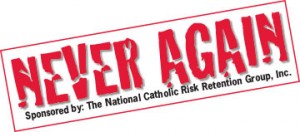Proactive measures to protect children in your church’s care from sexual misconduct
By Michael J. Bemi
 The youth minister’s CV and application, background screening, interviews and reference checks were all stellar. He was a “dream” candidate — seemingly sent to the parish as a gift from God. He was a happily married man; possessed of athletic ability and musical talents; and, he held a Master’s degree in Child Psychology.
The youth minister’s CV and application, background screening, interviews and reference checks were all stellar. He was a “dream” candidate — seemingly sent to the parish as a gift from God. He was a happily married man; possessed of athletic ability and musical talents; and, he held a Master’s degree in Child Psychology.
Four years later, the dream became a nightmare as this youth minister was convicted of sexual misconduct with more than a dozen victims. The litigation, settlements, counseling and therapy costs totaled many millions of dollars.
What went wrong?
The initial assessment of this candidate fulfilled virtually all (some faith organizations also employ fingerprinting) of the typically recommended protocols to employ to properly evaluate an individual seeking to work with children. A detailed application was required in addition to a résumé. A background screening service was utilized as an independent and objective review. Interviews were conducted by the pastor and parish youth coordinator — during which it was made very clear that the parish adhered to a multi-layered program to protect children, and would cooperate maximally with law enforcement to prosecute offenders who abused children. Calls were made to every reference provided.
It is critical to note, however, that it is quite common for offenders to surmount all these screening hurdles, because their generally outstanding grooming skills allow them to successfully coerce, manipulate and exploit their victims, as well as parents, guardians, coworkers and administrators responsible for the care of these children. Quite frequently, the perpetrators can effectively employ these grooming skills to hide their activities for many years, until they eventually “slip up” and are apprehended. Only then is a searchable record created.
Upcoming “Never Again” installments will spotlight additional insurable risks — incidents that occurred in churches, plus the valuable lessons they taught all involved.
Does this mean that these screening tools should be abandoned? Absolutely not, as they do often surface issues that don’t pass the “smell test” and can be utilized to keep a perpetrator from ever joining the organization.
Note that computer security experts will tell you that the best secured system can — and likely will — be hacked at some juncture. Consequently, security product providers are now rethinking their security program functions and changing the emphasis from blocking / filtering all malware, to now enhancing functions that immediately recognize a breach and take automatic (i.e., machine) action to remove and quarantine the malware and immediately report it to human IT administrators.
So, what is the analogue to this computer security industry development, from a child-safety perspective?
Recognizing the risk
Stopping abuse “dead in its tracks” begins with knowledge and recognition of the warning signs of a potential abuser. Look for individuals who: 1) always seem to want or attempt to be alone with children; 2) are more excited and enthused to be with children than with adults; 3) give gifts to children, often without permission from the child’s parent or guardian; 4) go overboard touching or hugging; 5) frequently want to wrestle with or tickle children; 6) allow or encourage children to engage in activities their parents would not allow; 7) use bad language around or tell dirty jokes to children; 8) show children pornography or sexually suggestive material; 9) discourage other adults from participating in or monitoring children’s activities; and 10) demonstrate by their attitude or actions that they think the rules do not apply to them.
Other critical mechanisms to employ that will help to discern and / or highlight the characteristics just enumerated include: utilizing the screening tools described herein; insisting that all youth-related activities be formally approved by the church administration; ensuring that all youth-related activities be closely monitored and involve multiple employed and / or volunteer adult participants; physically securing and monitoring all premises utilized for children’s activities; regularly communicating with your children; and readily communicating your concerns to church officials (which, dependent upon your role and your state, might include law enforcement or human service agencies).
Michael J. Bemi is president & CEO of The National Catholic Risk Retention Group, Inc. (Lisle, IL) — a recognized leader in risk management. To learn more about available coverage — and to get valuable tools, facts and statistics — visit tncrrg.org.


